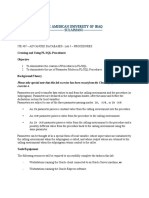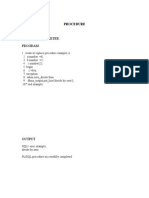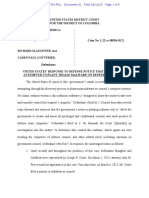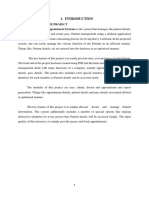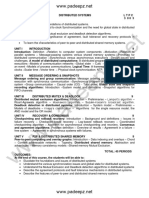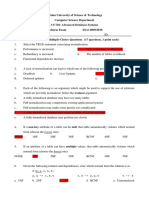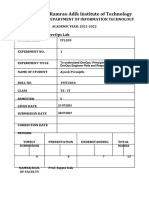0% found this document useful (0 votes)
7 views7 pagesExp 8 Dbms
The document provides an overview of PL/SQL procedures, including their syntax, parameter modes (IN, OUT, INOUT), and structure. It includes examples of creating and executing procedures for fetching student names and updating student marks in a database. Additionally, it demonstrates how to handle exceptions within procedures and the use of anonymous PL/SQL blocks to call these procedures.
Uploaded by
tmjasper2000Copyright
© © All Rights Reserved
We take content rights seriously. If you suspect this is your content, claim it here.
Available Formats
Download as DOCX, PDF, TXT or read online on Scribd
0% found this document useful (0 votes)
7 views7 pagesExp 8 Dbms
The document provides an overview of PL/SQL procedures, including their syntax, parameter modes (IN, OUT, INOUT), and structure. It includes examples of creating and executing procedures for fetching student names and updating student marks in a database. Additionally, it demonstrates how to handle exceptions within procedures and the use of anonymous PL/SQL blocks to call these procedures.
Uploaded by
tmjasper2000Copyright
© © All Rights Reserved
We take content rights seriously. If you suspect this is your content, claim it here.
Available Formats
Download as DOCX, PDF, TXT or read online on Scribd
/ 7





























